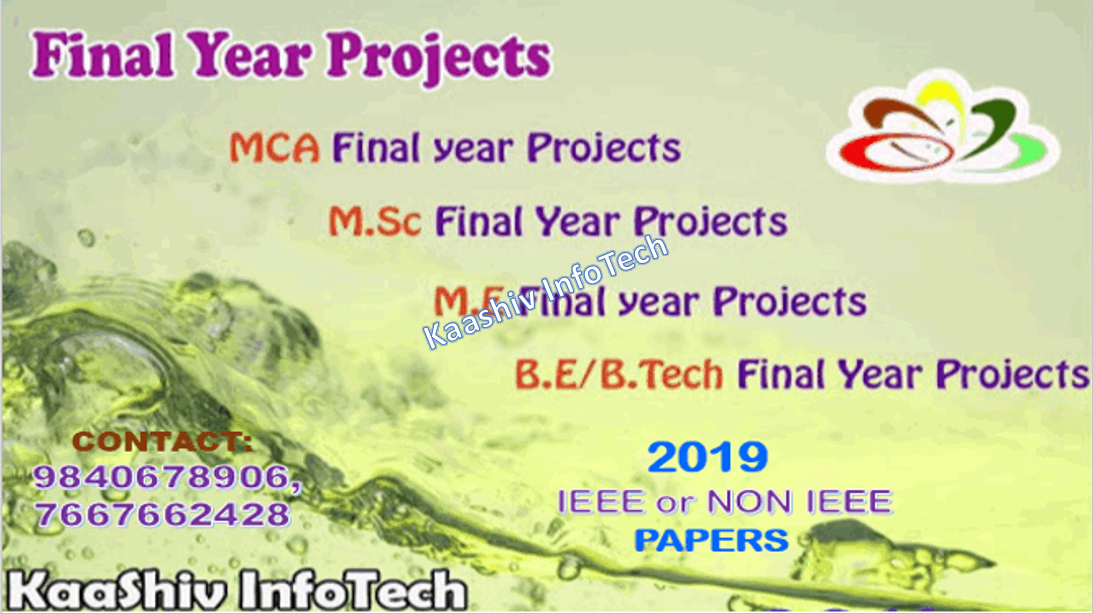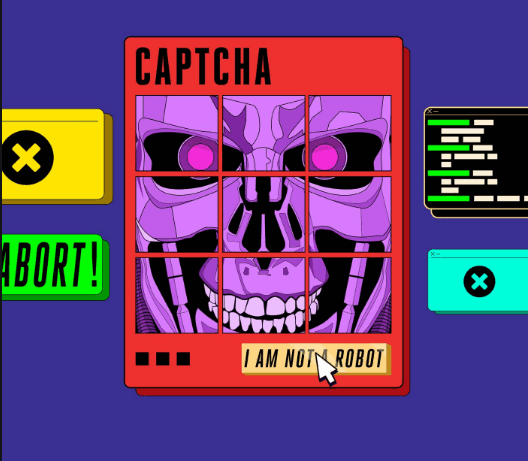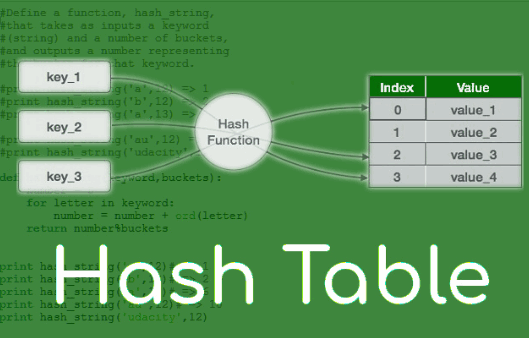ABSTRACT:
• Intelligent transportation systems (ITS) are sophisticated applications with a focus to generate and spread creative services related to different transport modes for traffic management and hence enable the terrorist passenger informed about the traffic well ahead and to use the transport networks in a better way.
• The Intelligent travel system provides an eminent Neural Network based intelligence system which provides automatic allocation of travel's through the Global Information system across the path of the terrorists travel. It's an innovative approach which can be implemented in schools, universities and shopping areas.
• The information is provided during start of the journey and hence the system is challenging due to dynamic nature of the traffic which varies based on speed, flow, and travel time.
• Here is the sequence of instructions to be noted,
– Once the terrorist caught by the police
– The crime department will identify the cameras for his movement and his location and pattern of his travel. This is wholly done by the Crime deparment After collecting the travel pattern of the terrorist, the police department will have to frame via the latitude and longitude of his travel.
– This data will be collected via an excel sheet and this is used in our project.
– The data needs to be feed in to our travel pattern system with the latitude and longitude values and its co-related with the google maps.
– This pattern needs to be mined with below specified algorithms to identify the possible of attacks.
– Two major components of the ITMS are Speed Prediction Neural Network System (SPNNS) and the Dynamic Traversing Speed Profile (DTSP) algorithm is based as reference algorithm for this project.
EXISTING SYSTEM:
1 Existing System focus on the Manual intervention of getting the inputs from the terrorists
2 No proper inputs received and it may be a fake information's.
3 No intelligent mining system available in the current scenarios
4 The existing system holds Policy context, Current Situations, Services, Measures and Implementation.
5 But most of things are manually maintained and done by the users. This needs to be automated.
6 Automation involves intelligent systems to participate.
MERITS:
EXISTING SYSTEM ALGORITHM:
SPNNS Algorithm:
• The SPNNS algorithm contains neural networks (NNs) trained to make short-term traffic forecasts at traffic sensor locations.
• The forecasting is made based on traffic congestion levels, and the length of forecasting time intervals.
• The SPNNS can predict the traffic speed at each sensor location in short terms up to 30 min ahead of the beginning time of a trip based on traffic sensor data available only at the trip starting time
• DTSP algorithm, puts the SPNNS together with the dynamic traversing algorithm to generate the whole speed profile from the trip origin to the destination by traversing the space and time domain and calling the SPNNS with dynamic time intervals
PROPOSED SYSTEM:
Intelligent Trip Modeling System (ITMS) is developed to predict the traveling profile for a selected route based on the traffic information available at the trip starting time.
The ITMS contains artificial intelligence based ideas to predict the short-term traffic of a users based on the pattern collects.
The data needs to be feed in to our travel pattern system with the latitude and longitude values and its co-related with the google maps.
This pattern needs to be mined with the proposed algorithms to identify the possible of attacks.
PROPOSED SYSTEM ALGORITHM:
Computational Optimized Allocation Algorithm:
• This is optimal ,computationally efficient, Integer-bit power allocation algorithm for discrete multitone modulation.
• Using efficient lookup table searches and a Lagrange-multiplier bisection search, our algorithm converges faster to the optimal solution than existing techniques and can replace the use of suboptimal methods because of its low computational complexity.
• Fast algorithms are developed for the data rate and performance margin maximization problems.
• Lagrange solution, Integer-bit restriction, fast algorithm via table look up these are all the methods involved in computational optimized allocation algorithm .
ARCHITECTURE:
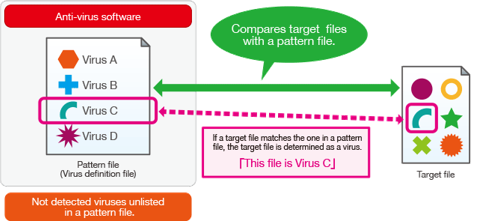
SCREENSHOT:
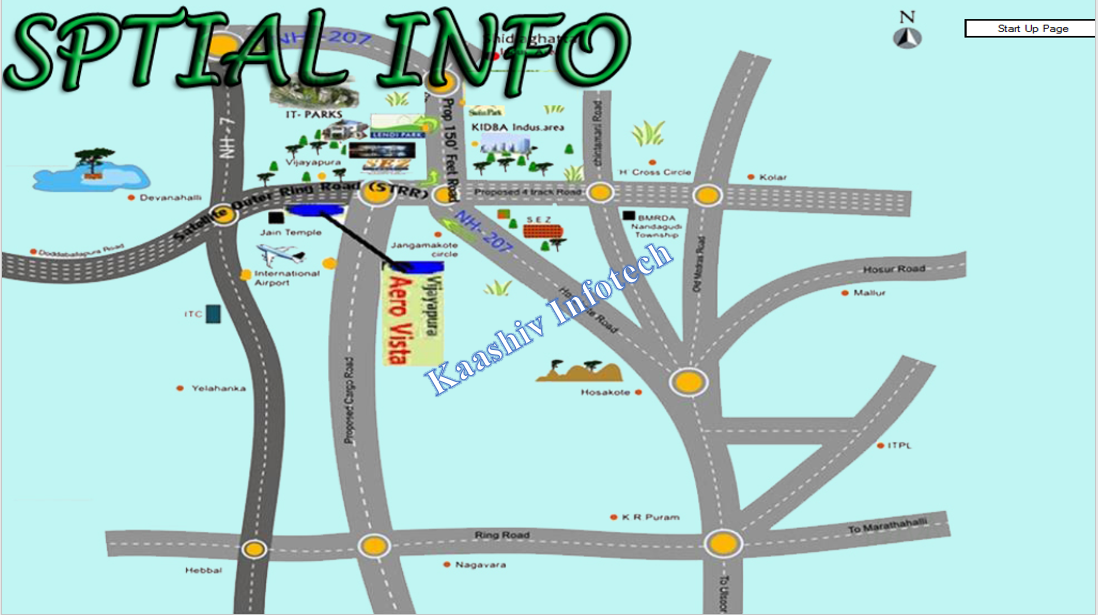
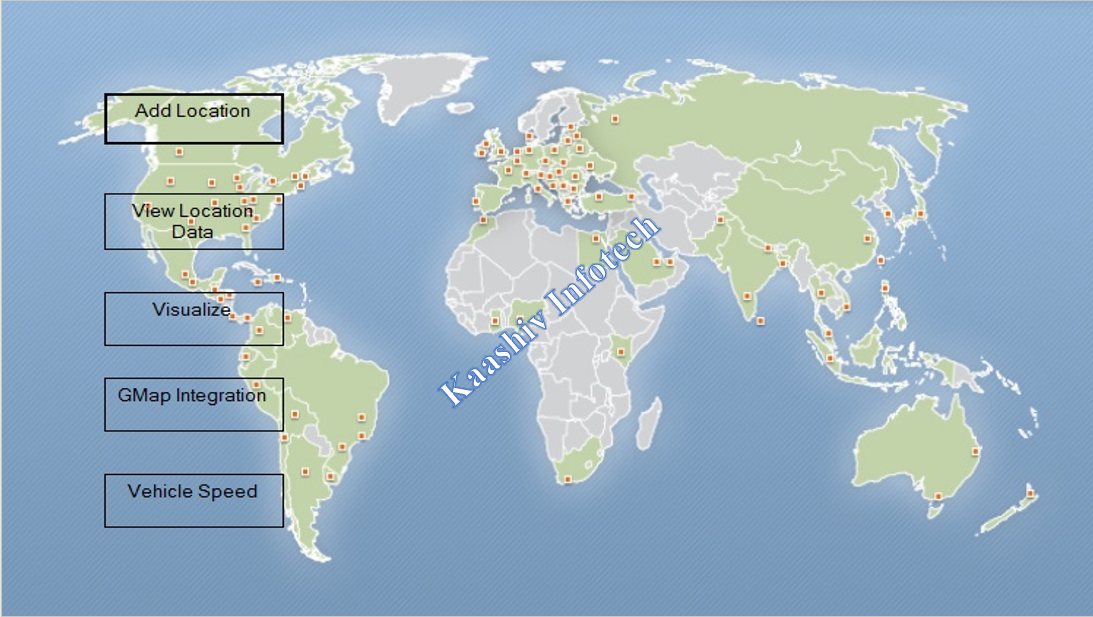
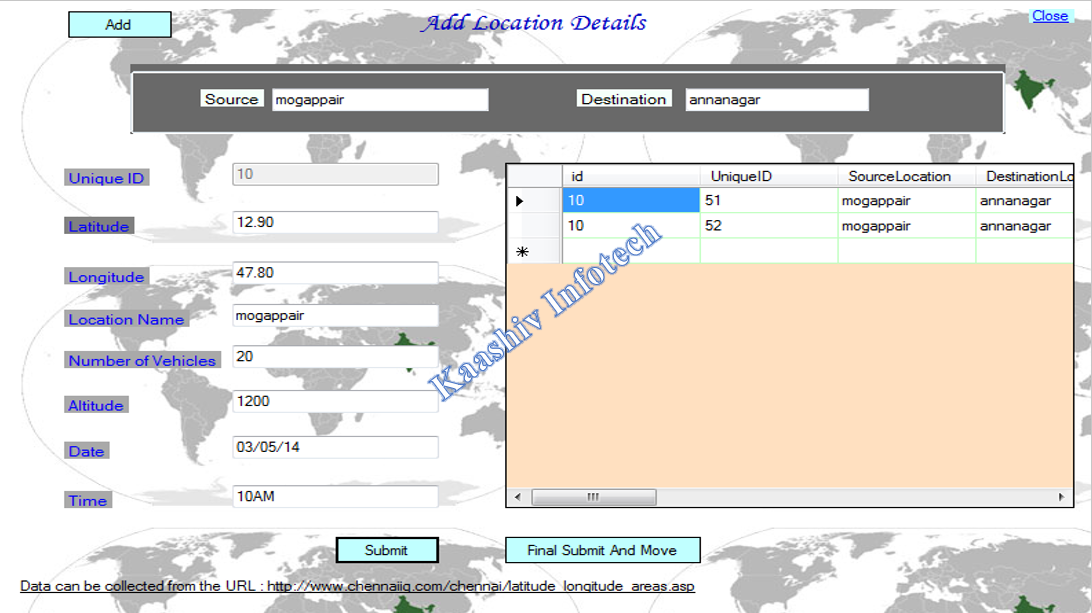
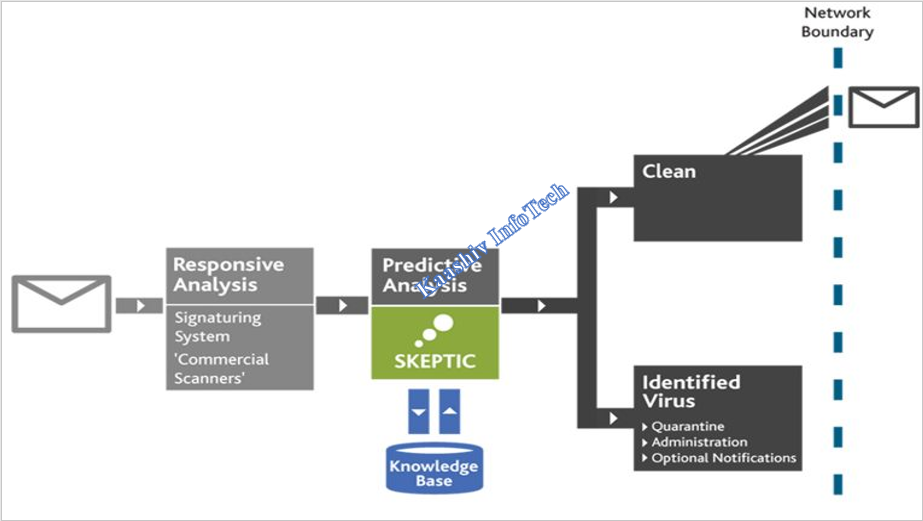
SAMPLE CODE:
using System;
using System.Collections.Generic;
using System.Linq;
using System.Text;
using System.Data;
using System.Data.SqlClient;
namespace ObjectAccess
{
public class ConnectDB
{
SqlConnection _EngleWood_DB_Cn;
private string sqlpri;
public string sql
{
get
{
return sqlpri;
}
set
{
sqlpri = value;
}
}
public void _EngleWood_DB_Op()
{
_EngleWood_DB_Cn = new SqlConnection(@"Data Source=KAASHIV-PC\VENKAT;Integrated Security=true;Initial Catalog=SpatialTaxi1");
_EngleWood_DB_Cn.Open();
}
public int VerifyCredentials(string usrName, string pwd)
{
_EngleWood_DB_Op();
DataSet _EngleWood_ds_124_DB = new DataSet();
SqlDataAdapter _EngleWood_Adap = new SqlDataAdapter();
SqlCommand _EngleWood_C = new SqlCommand("sp_VerifyCredentials", _EngleWood_DB_Cn);
_EngleWood_C.CommandType = CommandType.StoredProcedure;
_EngleWood_C.Parameters.Add(new SqlParameter("@UserName", SqlDbType.VarChar, 50));
_EngleWood_C.Parameters.Add(new SqlParameter("@Password", SqlDbType.VarChar, 50));
_EngleWood_C.Parameters[0].Value = usrName;
_EngleWood_C.Parameters[1].Value = pwd;
_EngleWood_Adap.SelectCommand = _EngleWood_C;
_EngleWood_Adap.Fill(_EngleWood_ds_124_DB);
_EngleWood_DB_Cn.Close();
return ((int)_EngleWood_ds_124_DB.Tables[0].Rows[0][0]);
}
public int AddItem( string uniqueid, string SourceLocation, string DestinationLocation,
string Latitude, string Longitude, string Location, string NumberOfVehicle,
string Altitude, string Date, string Time
)
{
_EngleWood_DB_Op();
string strCmd = "insert into dbo.TravellingData(id, [SourceLocation] ,[DestinationLocation] ,Latitude ,[Longitude] ,[Location] ,[NumberOfVehicle] ,[Altitude] ,[Date] ,[Time]) values("
+ uniqueid +",'"
+ SourceLocation + "','" + DestinationLocation + "'," + Latitude + "," + Longitude + ",'" + Location + "'," +
NumberOfVehicle + "," + Altitude + ",'" + Date + "','" + Time + "')";
SqlCommand _EngleWood_C = new SqlCommand(strCmd, _EngleWood_DB_Cn);
int i = 0;
i = _EngleWood_C.ExecuteNonQuery();
///////////////////////////////////////////////////////////////////////////
///////////////////////////////////////////////////////////////////////////
_EngleWood_DB_Cn.Close();
return i;
}
public int updateMapval( string val
)
{
_EngleWood_DB_Op();
string strCmd = "delete from MapTable ; insert into MapTable values("+val+")";
SqlCommand _EngleWood_C = new SqlCommand(strCmd, _EngleWood_DB_Cn);
int i = 0;
i = _EngleWood_C.ExecuteNonQuery();
///////////////////////////////////////////////////////////////////////////
_EngleWood_DB_Cn.Close();
return i;
}
public DataTable GetData(int val
)
{
_EngleWood_DB_Op();
SqlDataAdapter _EngleWood_Adap = new SqlDataAdapter(); DataSet _EngleWood_ds_124_DB = new DataSet();
string strCmd1 = "select * from dbo.TravellingData where ID=" + val.ToString();
SqlCommand cmd1 = new SqlCommand(strCmd1, _EngleWood_DB_Cn);
int i1 = 0;
_EngleWood_Adap.SelectCommand = cmd1;
_EngleWood_Adap.Fill(_EngleWood_ds_124_DB);
_EngleWood_DB_Cn.Close();
return _EngleWood_ds_124_DB.Tables[0] ;
}
public DataTable GetMaxData(
)
{
_EngleWood_DB_Op();
SqlDataAdapter _EngleWood_Adap = new SqlDataAdapter(); DataSet _EngleWood_ds_124_DB = new DataSet();
string strCmd1 = "select MAX(id) as id from dbo.TravellingData";
SqlCommand cmd1 = new SqlCommand(strCmd1, _EngleWood_DB_Cn);
int i1 = 0;
_EngleWood_Adap.SelectCommand = cmd1;
_EngleWood_Adap.Fill(_EngleWood_ds_124_DB);
_EngleWood_DB_Cn.Close();
return _EngleWood_ds_124_DB.Tables[0];
}
public DataTable GetDistinctData(
)
{
_EngleWood_DB_Op();
SqlDataAdapter _EngleWood_Adap = new SqlDataAdapter(); DataSet _EngleWood_ds_124_DB = new DataSet();
string strCmd1 = "select distinct id from dbo.TravellingData";
SqlCommand cmd1 = new SqlCommand(strCmd1, _EngleWood_DB_Cn);
int i1 = 0;
_EngleWood_Adap.SelectCommand = cmd1;
_EngleWood_Adap.Fill(_EngleWood_ds_124_DB);
_EngleWood_DB_Cn.Close();
return _EngleWood_ds_124_DB.Tables[0];
}
public DataTable GetData_ViewData(string val)
{
_EngleWood_DB_Op();
DataSet _EngleWood_ds_124_DB = new DataSet();
SqlDataAdapter _EngleWood_Adap = new SqlDataAdapter();
SqlCommand _EngleWood_C = new SqlCommand("SELECT [SourceLocation] ,[DestinationLocation] FROM [SpatialTaxi1].[dbo].[TravellingData] where ID="+ val.ToString(), _EngleWood_DB_Cn);
_EngleWood_C.CommandType = CommandType.Text;
_EngleWood_Adap.SelectCommand = _EngleWood_C;
_EngleWood_Adap.Fill(_EngleWood_ds_124_DB);
_EngleWood_DB_Cn.Close();
return (_EngleWood_ds_124_DB.Tables[0]);
}
public DataTable GetData_ViewGridData(string SourceData, string DestinationData,int id)
{
_EngleWood_DB_Op();
DataSet _EngleWood_ds_124_DB = new DataSet();
SqlDataAdapter _EngleWood_Adap = new SqlDataAdapter();
SqlCommand _EngleWood_C = new SqlCommand("select * from dbo.TravellingData where SourceLocation='" + SourceData + "' and DestinationLocation='" + DestinationData + "' and id ="+id, _EngleWood_DB_Cn);
_EngleWood_C.CommandType = CommandType.Text;
_EngleWood_Adap.SelectCommand = _EngleWood_C;
_EngleWood_Adap.Fill(_EngleWood_ds_124_DB);
_EngleWood_DB_Cn.Close();
return (_EngleWood_ds_124_DB.Tables[0]);
}
public DataTable GetData_ViewGridData_1(int id,string source,string destination)
{
_EngleWood_DB_Op();
DataSet _EngleWood_ds_124_DB = new DataSet();
SqlDataAdapter _EngleWood_Adap = new SqlDataAdapter();
SqlCommand _EngleWood_C = new SqlCommand("select distinct ID from dbo.TravellingData where SourceLocation='" + source + "' and DestinationLocation='" + destination + "' and ID != " + @id, _EngleWood_DB_Cn);
_EngleWood_C.CommandType = CommandType.Text;
_EngleWood_Adap.SelectCommand = _EngleWood_C;
_EngleWood_Adap.Fill(_EngleWood_ds_124_DB);
_EngleWood_DB_Cn.Close();
return (_EngleWood_ds_124_DB.Tables[0]);
}
public DataTable GetFirst_EngleWood_Tvl_124DataKM(int id )
{
_EngleWood_DB_Op();
DataSet _EngleWood_ds_124_DB = new DataSet();
SqlDataAdapter _EngleWood_Adap = new SqlDataAdapter();
SqlCommand _EngleWood_C = new SqlCommand("select id,UniqueID,Location,Latitude,Longitude,DistanceInKm from dbo.TravellingData where id=" + id + " order by 1 asc", _EngleWood_DB_Cn);
_EngleWood_C.CommandType = CommandType.Text;
_EngleWood_Adap.SelectCommand = _EngleWood_C;
_EngleWood_Adap.Fill(_EngleWood_ds_124_DB);
_EngleWood_DB_Cn.Close();
return (_EngleWood_ds_124_DB.Tables[0]);
}
public DataTable Sum_GetFirst_EngleWood_Tvl_124DataKM(int id)
{
_EngleWood_DB_Op();
DataSet _EngleWood_ds_124_DB = new DataSet();
SqlDataAdapter _EngleWood_Adap = new SqlDataAdapter();
SqlCommand _EngleWood_C = new SqlCommand("select sum(DistanceInKm) from dbo.TravellingData where id=" + id + " group by id", _EngleWood_DB_Cn);
_EngleWood_C.CommandType = CommandType.Text;
_EngleWood_Adap.SelectCommand = _EngleWood_C;
_EngleWood_Adap.Fill(_EngleWood_ds_124_DB);
_EngleWood_DB_Cn.Close();
return (_EngleWood_ds_124_DB.Tables[0]);
}
public DataTable GetFirst_EngleWood_Tvl_124DataMiles(int id)
{
_EngleWood_DB_Op();
DataSet _EngleWood_ds_124_DB = new DataSet();
SqlDataAdapter _EngleWood_Adap = new SqlDataAdapter();
SqlCommand _EngleWood_C = new SqlCommand("select id,UniqueID,Location,Latitude,Longitude,DistanceinMiles from dbo.TravellingData where id=" + id + " order by 1 asc", _EngleWood_DB_Cn);
_EngleWood_C.CommandType = CommandType.Text;
_EngleWood_Adap.SelectCommand = _EngleWood_C;
_EngleWood_Adap.Fill(_EngleWood_ds_124_DB);
_EngleWood_DB_Cn.Close();
return (_EngleWood_ds_124_DB.Tables[0]);
}
public DataTable Sum_GetFirst_EngleWood_Tvl_124DataMiles(int id)
{
_EngleWood_DB_Op();
DataSet _EngleWood_ds_124_DB = new DataSet();
SqlDataAdapter _EngleWood_Adap = new SqlDataAdapter();
SqlCommand _EngleWood_C = new SqlCommand("select sum(DistanceinMiles) from dbo.TravellingData where id=" + id + " group by id", _EngleWood_DB_Cn);
_EngleWood_C.CommandType = CommandType.Text;
_EngleWood_Adap.SelectCommand = _EngleWood_C;
_EngleWood_Adap.Fill(_EngleWood_ds_124_DB);
_EngleWood_DB_Cn.Close();
return (_EngleWood_ds_124_DB.Tables[0]);
}
public DataTable GetSpatialData_Diagrammatic(int id)
{
_EngleWood_DB_Op();
DataSet _EngleWood_ds_124_DB = new DataSet();
SqlDataAdapter _EngleWood_Adap = new SqlDataAdapter();
SqlCommand _EngleWood_C = new SqlCommand("SELECT [Location] ,[DistanceInKm]*100 as dist,[TimingDifference] FROM [SpatialTaxi1].[dbo].[TravellingData] where id=" + id , _EngleWood_DB_Cn);
_EngleWood_C.CommandType = CommandType.Text;
_EngleWood_Adap.SelectCommand = _EngleWood_C;
_EngleWood_Adap.Fill(_EngleWood_ds_124_DB);
_EngleWood_DB_Cn.Close();
return (_EngleWood_ds_124_DB.Tables[0]);
}
public DataTable speedManipulation(int id)
{
_EngleWood_DB_Op();
DataSet _EngleWood_ds_124_DB = new DataSet();
SqlDataAdapter _EngleWood_Adap = new SqlDataAdapter();
SqlCommand _EngleWood_C = new SqlCommand("speedManipulation", _EngleWood_DB_Cn);
_EngleWood_C.CommandType = CommandType.StoredProcedure;
_EngleWood_C.Parameters.Add(new SqlParameter("@ID", SqlDbType.Int, 50));
_EngleWood_C.Parameters[0].Value = Convert.ToInt32(id);
_EngleWood_Adap.SelectCommand = _EngleWood_C;
_EngleWood_Adap.Fill(_EngleWood_ds_124_DB);
_EngleWood_DB_Cn.Close();
return (_EngleWood_ds_124_DB.Tables[0]);
}
public DataTable SlownessSpeed(int id)
{
_EngleWood_DB_Op();
DataSet _EngleWood_ds_124_DB = new DataSet();
SqlDataAdapter _EngleWood_Adap = new SqlDataAdapter();
SqlCommand _EngleWood_C = new SqlCommand("speedManipulation", _EngleWood_DB_Cn);
_EngleWood_C.CommandType = CommandType.StoredProcedure;
_EngleWood_C.Parameters.Add(new SqlParameter("@id", SqlDbType.Int, 50));
_EngleWood_C.Parameters[0].Value = Convert.ToInt32(id);
_EngleWood_Adap.SelectCommand = _EngleWood_C;
_EngleWood_Adap.Fill(_EngleWood_ds_124_DB);
_EngleWood_DB_Cn.Close();
return (_EngleWood_ds_124_DB.Tables[0]);
}
public DataTable GetLat_Long(string val)
{
_EngleWood_DB_Op();
DataSet _EngleWood_ds_124_DB = new DataSet();
SqlDataAdapter _EngleWood_Adap = new SqlDataAdapter();
SqlCommand _EngleWood_C = new SqlCommand("Get_Lat_Long_Values", _EngleWood_DB_Cn);
_EngleWood_C.CommandType = CommandType.StoredProcedure;
_EngleWood_C.Parameters.Add(new SqlParameter("@ID", SqlDbType.Int, 50));
_EngleWood_C.Parameters[0].Value = Convert.ToInt32(val);
_EngleWood_Adap.SelectCommand = _EngleWood_C;
_EngleWood_Adap.Fill(_EngleWood_ds_124_DB);
_EngleWood_DB_Cn.Close();
return (_EngleWood_ds_124_DB.Tables[0]);
}
public DataTable GetTravelData1(int val)
{
_EngleWood_DB_Op();
DataSet _EngleWood_ds_124_DB = new DataSet();
SqlDataAdapter _EngleWood_Adap = new SqlDataAdapter();
SqlCommand _EngleWood_C = new SqlCommand("select distinct SourceLocation from dbo.TravellingData where id=" + val.ToString(), _EngleWood_DB_Cn);
_EngleWood_C.CommandType = CommandType.Text;
_EngleWood_Adap.SelectCommand = _EngleWood_C;
_EngleWood_Adap.Fill(_EngleWood_ds_124_DB);
_EngleWood_DB_Cn.Close();
return (_EngleWood_ds_124_DB.Tables[0]);
}
public DataTable GetTravelData2(int val)
{
_EngleWood_DB_Op();
DataSet _EngleWood_ds_124_DB = new DataSet();
SqlDataAdapter _EngleWood_Adap = new SqlDataAdapter();
SqlCommand _EngleWood_C = new SqlCommand("select distinct DestinationLocation from dbo.TravellingData where id=" + val.ToString(), _EngleWood_DB_Cn);
_EngleWood_C.CommandType = CommandType.Text;
_EngleWood_Adap.SelectCommand = _EngleWood_C;
_EngleWood_Adap.Fill(_EngleWood_ds_124_DB);
_EngleWood_DB_Cn.Close();
return (_EngleWood_ds_124_DB.Tables[0]);
}
public int ManipulateGeometry()
{
_EngleWood_DB_Op();
SqlCommand _EngleWood_C = new SqlCommand("ManipulateGeometry", _EngleWood_DB_Cn);
_EngleWood_C.CommandType = CommandType.StoredProcedure;
int i = 0;
i = _EngleWood_C.ExecuteNonQuery();
return i;
}
public int GetTimingDifference()
{
_EngleWood_DB_Op();
SqlCommand _EngleWood_C = new SqlCommand("GetTimingDifference", _EngleWood_DB_Cn);
_EngleWood_C.CommandType = CommandType.StoredProcedure;
int i = 0;
i = _EngleWood_C.ExecuteNonQuery();
return i;
}
public int Get_DistanceCalc(string val,string unit)
{
_EngleWood_DB_Op();
SqlCommand _EngleWood_C = new SqlCommand("Distance_Calc", _EngleWood_DB_Cn);
_EngleWood_C.CommandType = CommandType.StoredProcedure;
_EngleWood_C.Parameters.Add(new SqlParameter("@unit", SqlDbType.VarChar, 50));
_EngleWood_C.Parameters[0].Value = unit;
_EngleWood_C.Parameters.Add(new SqlParameter("@ID", SqlDbType.Int, 50));
_EngleWood_C.Parameters[1].Value = Convert.ToInt32(val);
_EngleWood_C.CommandType = CommandType.StoredProcedure;
int i = 0;
i = _EngleWood_C.ExecuteNonQuery();
return i;
}
public int Get_DistanceCalc_km(string val, string unit)
{
_EngleWood_DB_Op();
SqlCommand _EngleWood_C = new SqlCommand("Distance_Calc_km", _EngleWood_DB_Cn);
_EngleWood_C.CommandType = CommandType.StoredProcedure;
_EngleWood_C.Parameters.Add(new SqlParameter("@unit", SqlDbType.VarChar, 50));
_EngleWood_C.Parameters[0].Value = unit;
_EngleWood_C.Parameters.Add(new SqlParameter("@ID", SqlDbType.Int, 50));
_EngleWood_C.Parameters[1].Value = Convert.ToInt32(val);
_EngleWood_C.CommandType = CommandType.StoredProcedure;
int i = 0;
i = _EngleWood_C.ExecuteNonQuery();
return i;
}
}
}
IMPLEMENTATION:
IMPLEMENTATION MODULLE:
Implementation is the stage of the project when the theoretical design is turned out into a working system.
-
• Terrorists information Feed Module
- This module involves the travel pattern history of the user
- The below information needs to be loaded. It includes the latitude, longitude, Location, Severity of attack location, Travel pattern range.
• Travel Pattern feed Module
• Attacking Type – Mining Module
• Attacking Location – Mining Module
• Finalized Attacking Pattern Define Module
• Google Maps Integration Module
Terrorists information Feed Module:
• This module provides an information storage on the terrorists which is received by the cyber crime team.
• The information includes .
• Terrorists name
• Type of Attacks
• Previous Attack History
• Type of Attacking Places
• Any Other information's about the terrorist
• Image of the terrorist.
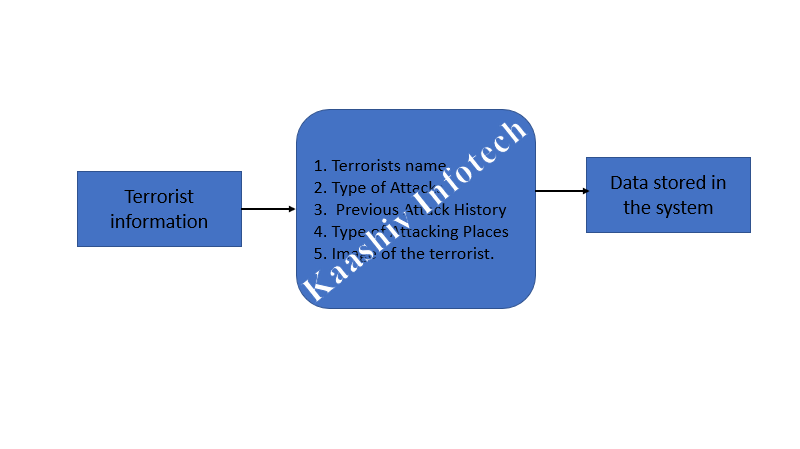
Travel Pattern Feed Module:
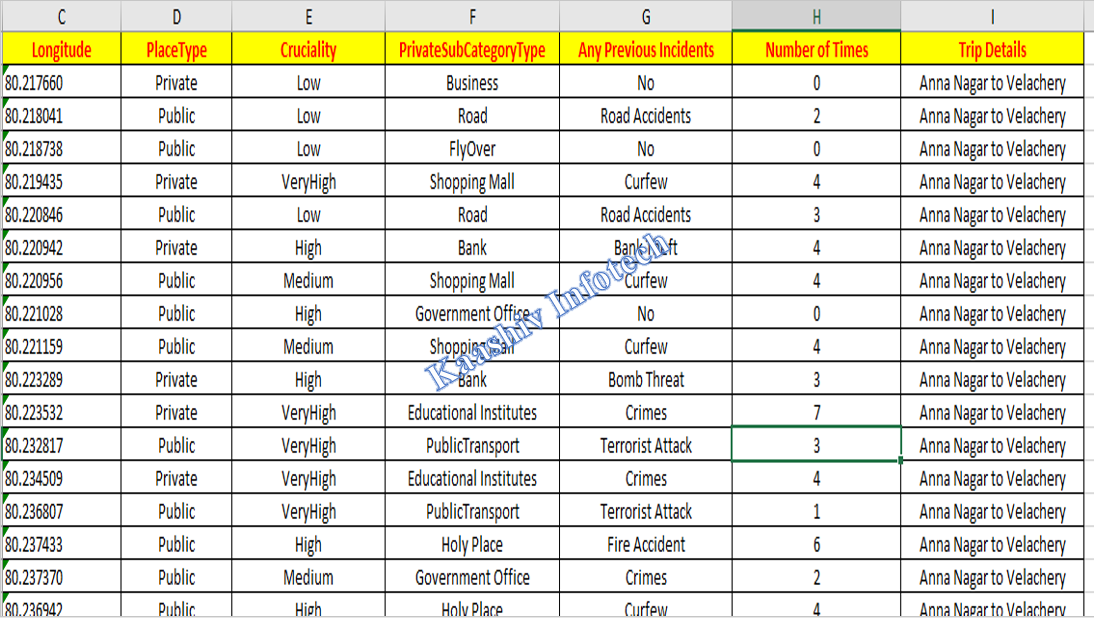
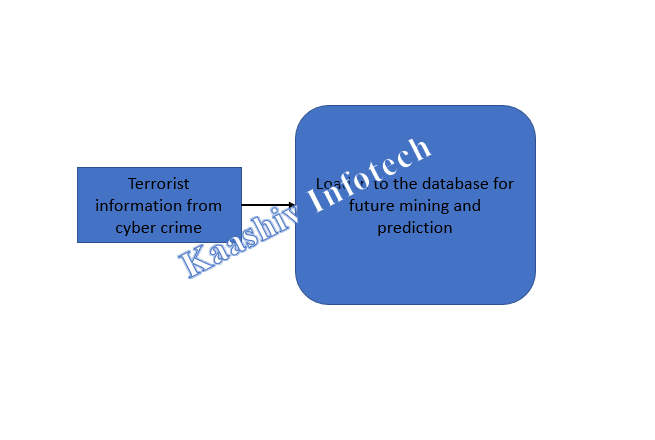
Attacking Type – Mining Module:
• This module provides an analysis of Terrorists Vs Attacking Type.
• Machine learning model is emphasized for supervised classification approaches.
• Prior to applying the learning model, the data is pre-processed to remove any unwanted data and ensure data mining principle is applied on real data.
• In predictive modelling, data is collected, a statistical model is formulated, predictions are made and the model is validated or revised as additional data becomes available.
• The outcome of this module is a fine tuned output of prediction on Attacking type the user is involved.
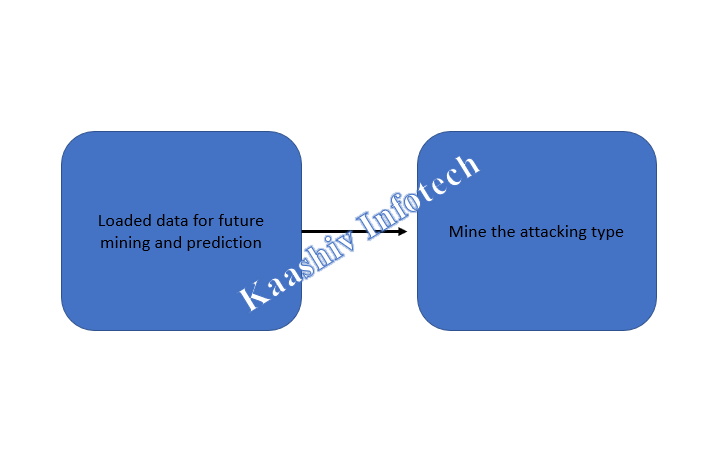
Attacking Location – Mining Module:
• This module provides an efficient lookup table searches and a Lagrange-multiplier bisection search.
• Preparation and data preprocessing are the most important and time consuming parts of this module.
• In this step, the data is converted into an acceptable format for our prediction algorithm. On top of it, we find the remarkable tuning up of data to identify the defective data set filter it and utilized for mining process.
• The data sets converges faster to the optimal solution than existing techniques and can replace the use of suboptimal methods because of its low computational complexity.
• The outcome of this module provides the attacking location of the terrorists.
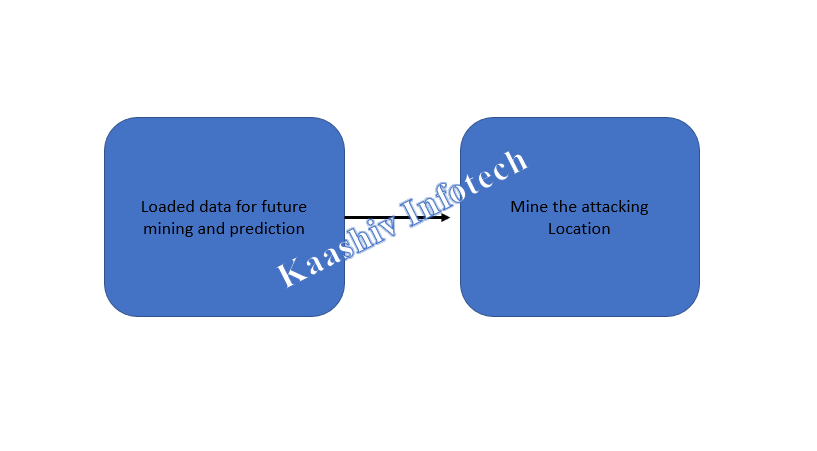
Finalized Attacking Pattern Define Module:
• This module provides a consolidated report of the possibility of attacking location and places cum type of attacks from the previously mined datasets.
• The finalized output of this project provides a convex nature of data tuneup by narrowing the data to the fine grained exact data.
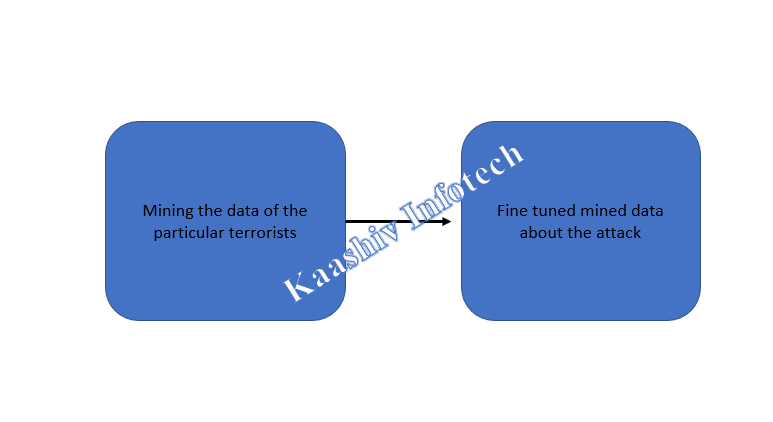
Google Maps Integration Module :
This module makes you to integrate the data and markup a dynamic Map generation which is integrated with live Google Maps.
A marker is set to show off, how the navigation is happening from the Source location to the final location and how the user travelled and their pattern of travel is identified which is the final outcome of the project.
ISO CERTIFIED - FINAL YEAR PROJECTS FOR ECE :
KaaShiv Offers, Final year project for ece. Final year project for ece includes Information security analysis,web application developer, Robotics, IOT, Big Data, cloud computing, Ethical Hacking, Image Analysis,Block chain ,Data science. This internship includes the topics related to final year projects ece 2nd year students , final year projects for ece 3rd year students , final year projects for ece 4th year students ,final year projects for final year students .This company runs by,
• 10 Years Awarded Microsoft Most Valuable Professional
• Google Recognized Experts
• Cisco Recognized Certified Experts
• Microsoft Awarded Certified Experts
• Robotics Experts
• HCL Technologies Awarded Expert
Trainers at KaaShiv InfoTech are real-time Software / IT professionals worked in leading MNCs like,
• CTS
• Wipro,
• TCS,
• Infosys,
• Accenture and
• Mindtree.
The Course curriculum for Final year project for ece is carefully researched and prepared by professionals from MNC to meet the demands expected in the IT industry. After completing the Final year project Training in Chennai at KaaShiv Infotech, students will be familiar with the Software development process followed in IT industry. Below are some of the insights of our Final year project program for ece ,
• Real-time project development and Technology Training by Microsoft Awarded Most Valuable Professiona
• Final year project for ece students involves Full practical training
• Hardware and software tools full support
• Technology training
• Placement training
• Full documentation and report analysis
• R & D projects
• Industrial exposure
• Endorsing Corporate skills
WHAT IS FINAL YEAR PROJECT ?
• The Final year projects plays a crucial role in the teaching-learning process.
• It is also a way of identifying the ability of the student to perform an industrial project or applied research linked to the knowledge discipline.
• A project is defined as an effort to create or modify a specific product or service.
• Projects are temporary work efforts with a clear beginning and end.
• Final year project (or program) any undertaking, carried out individually or collaboratively and possibly involving research or design, that is carefully planned (usually by a project team) to achieve a particular aim
WHAT ARE THE BENEFITS GAINED BY DOING FINAL YEAR PROJECT
• final year projects if done well can add a lot of credibility to your profile.
• And especially your final year projects building experience can help you perform well in core job placements & higher studies admission interviews.
TIPS TO SELECT GOOD FINAL YEAR PROJECTS
>
• Analyze the current trends
• Focus your final year project on any social issue
• Get expert’s assistance whenever possible
• Research about the final year projects done by your seniors
• Refer the research journals published by scholars
• Check the feasibility of your final year project
• Work with organizations like Kaashiv InfoTech
WHY, ECE STUDENTS FINAL YEAR PROJECTS SHOULD BE A REAL TIME FINAL YEAR PROJECTS ?
Final year project for ece students provides a real time exposure for the Final year project for ece students on the latest and trending technologies. Below are some of the Top jobs in the IT Industry Job Openings ,
• Software Developers – Good in Python, Machine Learning, Data Science and AI programming
• BlockChain Administrators
• IOT Specialists
• Cyber Security
• Web Application Developer – Web Designers
• Information Security Analyst – Security Specialist
• Network Engineers / Analys
KaaShiv Infotech, Final year project for ece Student - programme hornes you in the above said skills / job roles from basics to Advanced.
FINAL YEAR PROJECT FOR ECE - PROGRAMME HIGHLIGHTS
• Final year project for ece program duration: 5days/ 10days / Or Any number of days
• Training hours: 3hrs per day
• Software & others tools installation Guidance
• Hardware support
• Final year project for ece Report creation / Project Report creation
• Final year project for ece students based 2 projects ( real time)
• Final year project Certificate & Inplant Training Certificate & Industrial exposure certificate + (Achievement certificate for best performers)
ADVANTAGES OF OUR- FINAL YEAR PROJECT FOR ECE
• Get Real Work Experience
• Get a Taste of Your Chosen Field
• Start Networking
• Helps You Choose a Speciality
• Helps You Become More Self-Confident
• Boosts Your CV
• Increases Your Market Value
FINAL YEAR PROJECT FOR ECE - MATERIALS
• Final year project for ece student , includes Materials after the internship programme
• Technological guidance and materials will be shared in entire year for the students to mold technically.
• Our be student involves Free Projects at the end of the programme.
QUERIES OR CONTACT DETAILS :
Venkat (7667662428) and Asha (7667668009)
EmailID:kaashiv.info@gmail.com ,
priyanka.kaashiv@gmail.com
FINAL YEAR PROJECT FOR ECE- PROGRAMME DURATION :
1 months / 2 months / 3 months to 6 Months ( Any Number of Days - Based on student preferences)
WHO CAN ATTEND THIS FINAL YEAR PROJECT FOR ECE PROGRAMME :
final year project for ece - Programme can be attended by the students who are looking for final year project for ece/ final year project for ece 2nd year/
final year project for ece 3rd year/ final year project for ece 4th year.
FINAL YEAR PROJECT FOR ECE - PROGRAMME OUTCOME :
1. Student will be specialized in Block Chain, Artificial Intelligence, Machine Learning, Python and R programming, Application Development
, Web designing and Networking concepts (Basics to Advanced)
2. Covering 45 concepts
3. Students will be getting trained in / writing 45 Programs – Will change based on the durations of the program.
4. 2 Projects and project documents will be given at the end of the program
REFERENCE YOUTUBE URL FOR FINAL YEAR PROJECT FOR ECE :
Check our Internship Training sample videos at this URL –
Check our Internship Training sample videos
REGISTRATION LINK FOR – FINAL YEAR PROJECT FOR ECE :
final year project for ece - Offline - Office training
Fill our online Internship form
FINAL YEAR PROJECT FOR ECE – DEMO LINK :
Check out our Sample final year project for ece Content for the training
inplant-training-in-chennai-for-cse-demo
CHECK OUR PREVIOUS TESTIMONIALS FROM STUDENTS FROM DIFFERENT COUNTRIES AND DIFFERENT STATES :
www.kaashivinfotech.com/testimonials/
CHECK OUR STUDENTS FEEDBACK ON OUR - FINAL YEAR PROJECT FOR ECE
final year project for ece - Feedback - inplant-training-feedback /
final year project for ece - Feedback - internship-feedback
CHECK OUT THE COLLEGES ATTENDED OUR FINAL YEAR PROJECT FOR ECE
internship-and-inplant-training-attendees/
CHECK OUR SOCIAL SERVICE YOUTUBE CHANNELS :
Check our Social Service youtube channels
Check our Social Service youtube channels
REAL TIME PROJECT :
We ranked Top 200 technological companies in Tamil Nadu, Click here to view
More on our, Final year project for ece:
In our, internship on final year project for ece- programme below are following different kind of programmes focused such as,
1. Final year project for ece(or) paid Final year project for ece,
- Kaashiv Provides an in-depth knowledge of software Platform and other relevant software technologies.
2. Final year project for ece work from home – Our company provides facility for the students to learn from home as an Final year project for ece based on latest technological trends.
3. Final year project for ece report – Reports are also provided for the final year projects for students in our company related
4. Final year project for ece jobs – 100% Job assistance will be provided for the students to gain practical knowledge during the Final year project for cse period in our company.
5. Final yearproject for ece summer / Winter internship 2019/2020 – Summer / Winter holiday internship in Final year projects will be given to the student based on the developer knowledge base.
6. Final year project for ece interview questions – We provide top trending and frequently asked question for the intern students during the internship period based on software development and trending technologies.
7. Final year project for ece test – Based on the students request, if you are looking for any test to validate your knowledge. we are ready to provide the same.
8. Final year project for ece certificate – Industry recognized certificates will be provided for the students who perform internship in our company based .
9. Final year project for ece online– Learn Final year projects ece from home, our company perform internship through online too.
10. Final year project for ece ppt / final year projects for ece / projects report – We provide Final year projects for ece based ppts. projects and project reports as materials after the internship in our company.
11. Free final year project for ece - Our company will provide free Final year projects for ece the best students of kaashiv infotech.
12. Project For Diploma Final year projects for ece – We offer project for the diploma Final year project for ece students in our company.
13. Final year project for ece 2nd Year / 3rd Year / B-Tech Students – Our company offers you final year project for ece the above students.
